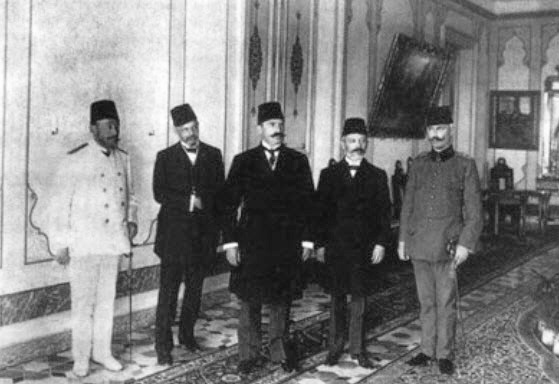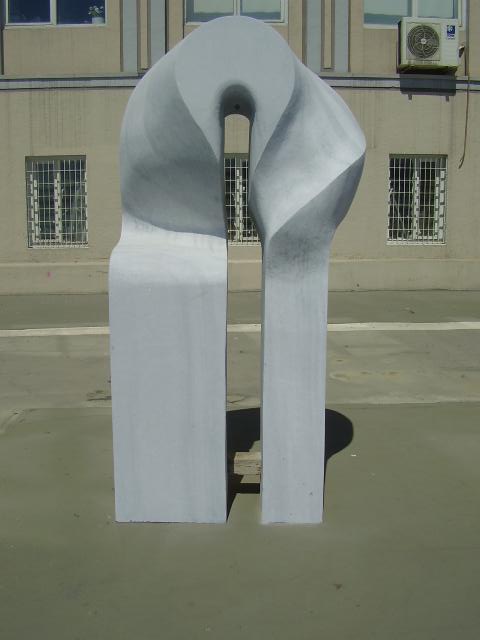|
Fındıklı, Beyoğlu
Fındıklı is the northernmost neighbourhood of the Beyoğlu district of İstanbul, Turkey, on the European coast of the Bosphorus at . Tophane is to the south and Kabataş to the north. Towards the water it is a mainly business and hotel district although it becomes residential in the streets running uphill towards Gümüşsuyu. Fındıklı is served by the T1 tram service. Along the waterfront, the quarter is home to the Mimar Sinan Fine Arts University, which is housed in what were once the Twin Palaces (''Çifte Saraylar'') of Münire Sultan and Cemile Sultan, the daughters of Sultan Abdülmecid. The small Fındıklı Park beside it contains sculptures created by the students of the university. The Twin Palaces briefly housed the Ottoman Parliament (''Meclis-i'' ''Mebusan'') The waterfront Molla Çelebi Mosque was designed by the Ottoman architect Mimar Sinan Mimar Sinan ( ota, معمار سينان, translit=Mi'mâr Sinân, , ) ( 1488–1490 – 17 July 15 ... [...More Info...] [...Related Items...] OR: [Wikipedia] [Google] [Baidu] |
Beyoğlu
Beyoğlu (, ota, بكاوغلی, script=Arab) is a district on the European side of İstanbul, Turkey, separated from the old city (historic peninsula of Constantinople) by the Golden Horn. It was known as the region of Pera (Πέρα, meaning "Beyond" in Greek language, Greek) surrounding the ancient coastal town Galata which faced Constantinople across the Horn. Beyoğlu continued to be named Pera during the Middle Ages and, in western languages, into the early 20th century. According to the prevailing theory, the Turkish name of Pera, ''Beyoğlu'', is a modification by folk etymology of the Republic of Venice, Venetian title of ''Bailo of Constantinople, Bailo'', whose mansion was the grandest structure in this quarter. The informal Turkish-language title ''Bey Oğlu'' (literally ''Son of a Bey'') was originally used by the Ottoman Empire, Ottoman Turks to describe Lodovico Gritti, Istanbul-born son of Andrea Gritti, who was the Venetian Bailo of Constantinople during the ... [...More Info...] [...Related Items...] OR: [Wikipedia] [Google] [Baidu] |
Cemile Sultan
Cemile Sultan ( ota, جمیله سلطان; "''beautiful, radiant''"; 17 August 1843 – 26 February 1915) was an Ottoman princess, the daughter of Sultan Abdulmejid I and Düzdidil Hanım. She was the half sister of Sultans Murad V, Abdul Hamid II, Mehmed V, and Mehmed VI. Early life Cemile Sultan was born on 17 August 1843 in the Old Beylerbeyi Palace. Her father was Sultan Abdulmejid I, and her mother was Düzdidil Hanım. She was the third child and the third daughter of her mother. She had two elder sisters, twin Neyire Sultan and Münire Sultan, two years older than her, and a younger sister Samiye Sultan, all died young. In 1845, Düzdidil Hanım died leaving Cemile Sultan motherless at the age of two. Abdulmejid took her to her first legal wife, Perestu Kadın, and entrusted her into the lady's care. She grew up together with her half-brother Abdul Hamid II, who was also adopted by Perestu, in the same household and spent their childhoods with one another. The two ... [...More Info...] [...Related Items...] OR: [Wikipedia] [Google] [Baidu] |
Hekimoğlu Ali Pasha
Hekimoğlu Ali Pasha (1689 – 13 August 1758) was an Ottoman statesman and military leader who served as Grand Vizier of the Ottoman Empire three times. Family His father, Nuh, was a Venetian convert to Islam who worked in Constantinople (modern-day Istanbul) as a doctor, and his mother Safiye was a Turk. His epithet ''Hekimoğlu'' means "son of a physician" in Turkish. Early years Ali worked in various districts (and provinces) of the empire like Zile (in modern-day Tokat Province, Turkey), Yeniil (south of modern-day Sivas Province, Turkey), Adana Eyalet (in modern-day Turkey), Aleppo Eyalet (in modern-day Syria) as a provincial governor. He fought during Ottoman–Persian War (1722–27) and captured Tebriz. After the treaty of Hamedan in 1727, he worked in Shahrizor Eyalet (in modern-day Iraq) and Sivas. During the new war against Persia, he was appointed as the commander of the front ( tr, serdar). He captured Urmia and Tabriz (second time). He was the ... [...More Info...] [...Related Items...] OR: [Wikipedia] [Google] [Baidu] |
Mimar Sinan
Mimar Sinan ( ota, معمار سينان, translit=Mi'mâr Sinân, , ) ( 1488–1490 – 17 July 1588) also known as Koca Mi'mâr Sinân Âğâ, ("Sinan Agha (title), Agha the Grand Architect" or "Grand Sinan") was the chief Ottoman Empire, Ottoman architect ( tr, links=no, mimar) and civil engineer for sultans Suleiman the Magnificent, Selim II and Murad III. He was responsible for the construction of more than 300 major structures and other more modest projects, such as schools. His apprentices would later design the Sultan Ahmed Mosque in Istanbul and Stari Most in Mostar. The son of a stonemason, he received a technical education and became a military engineer. He rose rapidly through the ranks to become first an officer and finally a Janissary commander, with the honorific title of Sinan.Goodwin (2001), p. 87 He refined his architectural and engineering skills while on campaign with the Janissaries, becoming expert at constructing fortifications of all kinds, as well ... [...More Info...] [...Related Items...] OR: [Wikipedia] [Google] [Baidu] |
Molla Çelebi Mosque
The Molla Çelebi Mosque ( tr, Molla Çelebi Camii), sometimes known as the Fındıklı Mosque ( tr, Fındıklı Camii) is a 16th-century Ottoman mosque located in the Fındıklı neighbourhood of the Beyoğlu district of Istanbul, Turkey. It was commissioned by Kazasker Mehmet Vusuli Efendi, chief judge of Istanbul and designed by the imperial architect Mimar Sinan. The mosque is located on the Bosphorus waterfront, close to the Kabataş ferry port and Dolmabahçe Mosque. Geography The mosque is located in Istanbul in the Fındıklı district of Beyoglu county in the Meclisi Mebusan Street, on the lower shores of the European Bosphorus, at Findikk. The Molla-Celebi mosque, also known as “Findikli Camii” or “the Hazelnut”, as viewed from the waterside, near the Kabataş funicular and ferry stations, looks very elegant and impressive, particularly under the reflection of the evening sun over the Bosphorus Straits. History The mosque was designed by renowned architec ... [...More Info...] [...Related Items...] OR: [Wikipedia] [Google] [Baidu] |
Servet-i Fünun
''Servet-i Fünun'' ("''Wealth of Knowledge''", french: Servetifunoun) was an avant-garde journal published in the Ottoman Empire and later in Turkey. Halit Ziya (Uşaklıgil) and the other writers of the "New Literature" ( ota, Edebiyat-ı Cedide, script=Latn) movement published it to inform their readers about European, particularly French, cultural and intellectual movements. In operation from 1891 until 1944, it was for its first year a supplement of the newspaper '' Servet'', but became an independent publication from 1892. Its offices were in Stamboul, the central part of Constantinople. Today the region is known as the Fatih district. Evangelia Balta and Ayșe Kavak state that during the late Ottoman Empire it was " e most influential literary journal" which had "a significant role in the intellectual life" of the country. Other titles of the magazine were ''Uyanış'', ''Resimli Uyaniş'', and ''Terwet-i fünūn''. History In 1890 20-year old Ahmed İhsan, who later ... [...More Info...] [...Related Items...] OR: [Wikipedia] [Google] [Baidu] |
Ottoman Parliament
The General Assembly ( tr, Meclis-i Umumî (French romanization: "Medjliss Oumoumi" ) or ''Genel Parlamento''; french: Assemblée Générale) was the first attempt at representative democracy by the imperial government of the Ottoman Empire. Also known as the Ottoman Parliament (french: Parlement Ottoman'' Legislation ottomane'' Volume 5: https://upload.wikimedia.org/wikipedia/commons/6/67/L%C3%A9gislation_ottomane_ou_Recueil_des_Aristarchi-Bey_Gr%C3%A9goire_Tome5.pdf p. 295 (PDF p. 299/370)), it was located in Constantinople (Istanbul) and was composed of two houses: an upper house (Senate, ''Meclis-i Âyân''), and a lower house (Chamber of Deputies, ''Meclis-i Mebusân''). The General Assembly was first constituted on 23 December 1876 and initially lasted until 14 February 1878, when it was dissolved by Sultan Abdul Hamid II. As a result of the Young Turk Revolution which brought substantial reforms and larger participation by political parties, the General Assembly was re ... [...More Info...] [...Related Items...] OR: [Wikipedia] [Google] [Baidu] |
Sultan Abdülmecid
Abdulmejid I ( ota, عبد المجيد اول, ʿAbdü'l-Mecîd-i evvel, tr, I. Abdülmecid; 25 April 182325 June 1861) was the 31st Sultan of the Ottoman Empire and succeeded his father Mahmud II on 2 July 1839. His reign was notable for the rise of nationalist movements within the empire's territories. Abdulmejid wanted to encourage Ottomanism among secessionist subject nations and stop rising nationalist movements within the empire, but despite new laws and reforms to integrate non-Muslims and non-Turks more thoroughly into Ottoman society, his efforts failed in this regard. He tried to forge alliances with the major powers of Western Europe, namely the United Kingdom and France, who fought alongside the Ottoman Empire in the Crimean War against Russia. During the Congress of Paris on 30 March 1856, the Ottoman Empire was officially included among the European family of nations. Abdulmejid's biggest achievement was the announcement and application of the Tanzimat (reorganiz ... [...More Info...] [...Related Items...] OR: [Wikipedia] [Google] [Baidu] |
Münire Sultan (daughter Of Abdulmejid I)
Münire Sultan ( ota, منیرہ سلطان; "''brightness''" or "''brilliant''"; 9 December 1844 – 29 June 1862) was an Ottoman princess, daughter of Sultan Abdulmejid I and one of his consorts Verdicenan Kadın. Early life Münire Sultan was born on 9 December 1844 at the Topkapı Palace. Her father was Sultan Abdulmejid I, and her mother was Verdicenan Kadın, the daughter of Prince Kaytuk Giorgi Achba and Princess Yelizaveta Hanım. She was the eldest child of her mother. She had a brother of Şehzade Ahmed Kemaleddin, three years younger than her, and an adoptive sister, Mediha Sultan. First marriage Engagement In March 1854, a messenger from Istanbul announced the betrothal of Münire Sultan to Prince Ibrahim Ilhami Pasha, son of Abbas I of Egypt and his wife Mahivech Hanim. Large public celebrations were proclaimed and the viceroy was reported to be highly pleased with the news. Ibrahim Pasha sent her a solitaire ring, solitaire earrings and a briolette as her betrothal ... [...More Info...] [...Related Items...] OR: [Wikipedia] [Google] [Baidu] |
İstanbul
Istanbul ( , ; tr, İstanbul ), formerly known as Constantinople ( grc-gre, Κωνσταντινούπολις; la, Constantinopolis), is the List of largest cities and towns in Turkey, largest city in Turkey, serving as the country's economic, cultural and historic hub. The city straddles the Bosporus strait, lying in both Europe and Asia, and has a population of over 15 million residents, comprising 19% of the population of Turkey. Istanbul is the list of European cities by population within city limits, most populous European city, and the world's List of largest cities, 15th-largest city. The city was founded as Byzantium ( grc-gre, Βυζάντιον, ) in the 7th century BCE by Ancient Greece, Greek settlers from Megara. In 330 CE, the Roman emperor Constantine the Great made it his imperial capital, renaming it first as New Rome ( grc-gre, Νέα Ῥώμη, ; la, Nova Roma) and then as Constantinople () after himself. The city grew in size and influence, eventually becom ... [...More Info...] [...Related Items...] OR: [Wikipedia] [Google] [Baidu] |
Mimar Sinan Fine Arts University
The Mimar Sinan Fine Arts University ( tr, Mimar Sinan Güzel Sanatlar Üniversitesi, or MSGSÜ) is a Turkish public university dedicated to higher education in the fine arts. It is located in the Fındıklı neighbourhood of Beyoğlu, Istanbul, Turkey. Founded in 1882 by Osman Hamdi Bey, the institution imitated the traditional European Beaux-Arts model and was the first Western-style art academy of its kind in the Middle East. The Mimar Sinan Fine Arts High Schools in Istanbul and Ankara have no relation with the Mimar Sinan Fine Arts University. History On January 1, 1882, he renowned Turkish painter, art historian, archaeologist, and museum curator, Osman Hamdi Bey established the School of Fine Arts (Sanayi-i Nefise Mekteb-i Âlisi, formally Mekteb-i Sanayi-i Nefise-i Şâhâne or Sanayi-i Nefise Mektebi) here. When it opened on March 2, 1883, with eight instructors and 20 students, it was Turkey's first educational institution for the fine arts and architecture. In ... [...More Info...] [...Related Items...] OR: [Wikipedia] [Google] [Baidu] |



